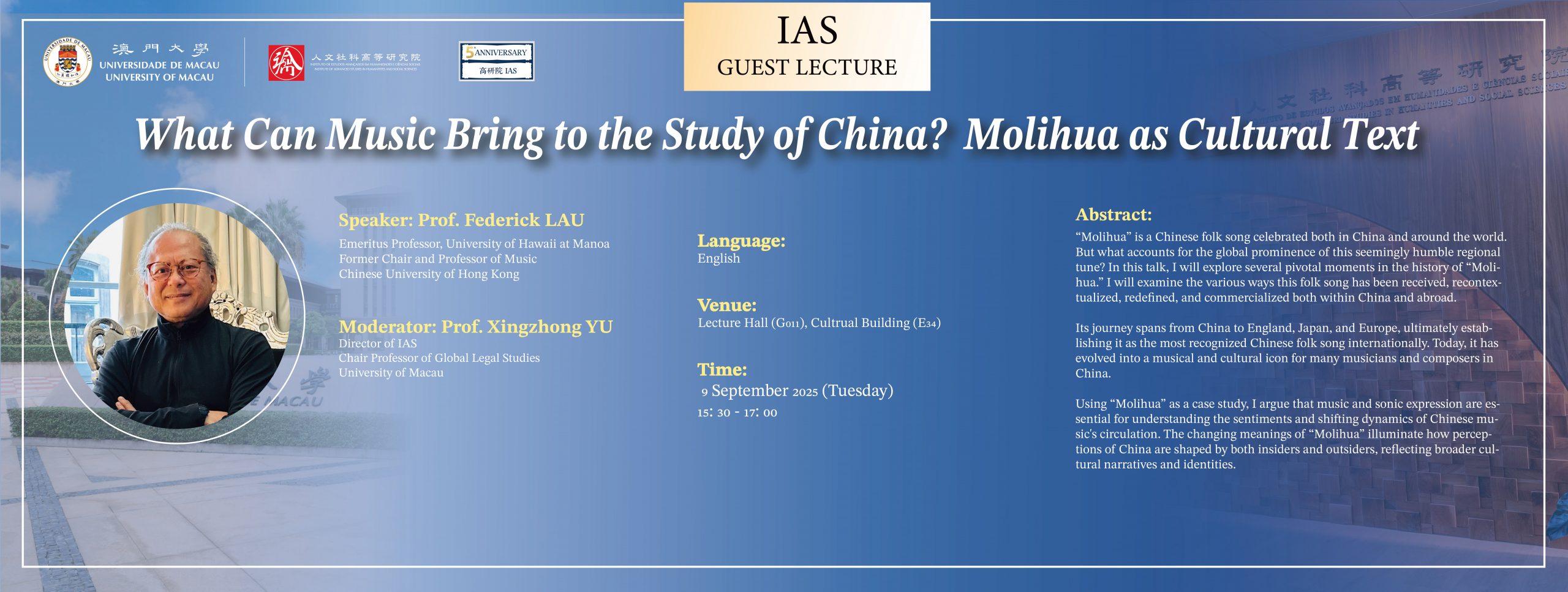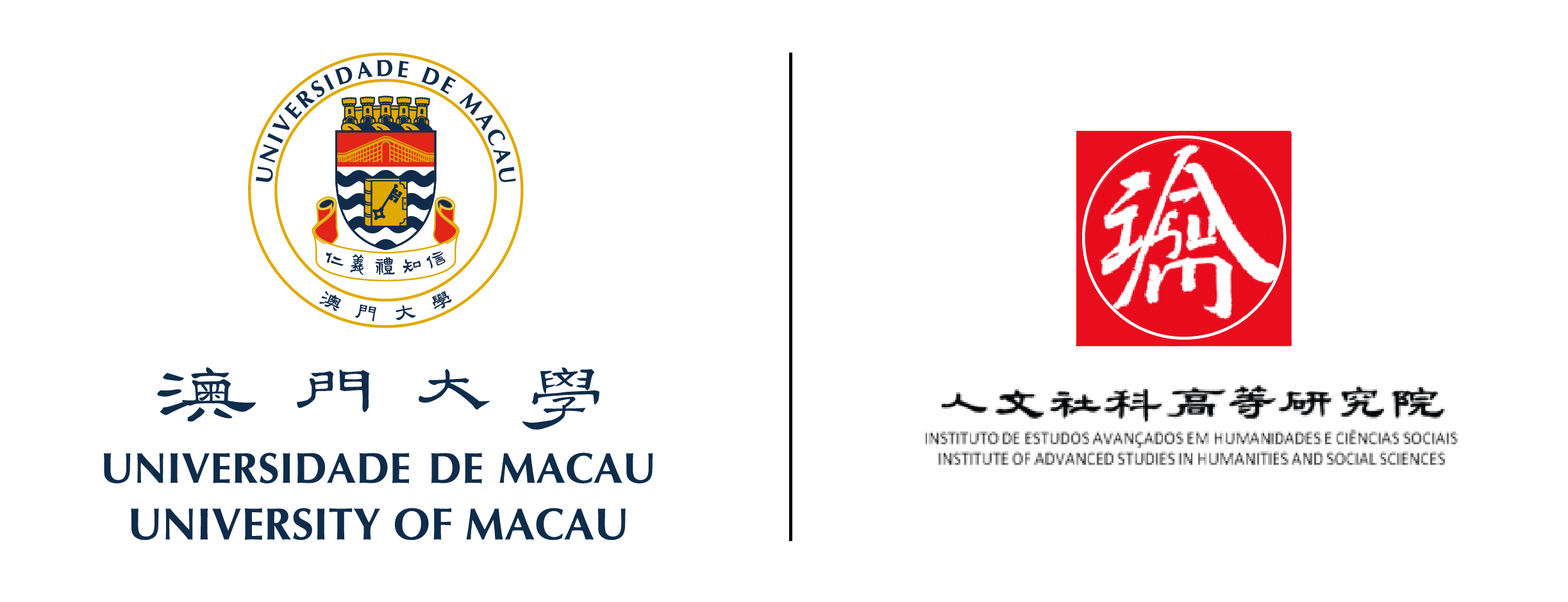
On September 9, the Institute of Advanced Studies in Humanities and Social Sciences (IAS) at University of Macau successfully hosted the guest lecture entitled “What Can Music Bring to the Study of China?”.
The lecture was delivered by Professor Frederick Lau, an Emeritus Professor at the University of Hawaii at Mānoa, and former Chair and Professor of Music at the Chinese University of Hong Kong. Professor Xingzhong Yu, Director of IAS and the Chair Professor at the Faculty of Law, noted that this marks the first time in IAS’s history that an academic event has been centered around music-related themes.
Prof. Lau explored how music can serve as both cultural and social text, providing a nuanced lens to understand China’s history, social values, and cultural dynamics. Through in-depth analysis, he illustrated how a well-known Chinese song has been adapted and reinterpreted over time, from its local folk origins to its role as a symbol of Chinese identity in both national narratives and international imagination.
The lecture covered several key topics: foundational background information on music and sounds in academic Chinese studies; the transformation of the song through different historical periods and social contexts; the functions of music in conveying collective memory, national sentiment, and soft power; and the potential of music-based inquiry to enrich interdisciplinary studies in Chinese culture.
During the lecture, Prof. Lau played various versions of the song, including the traditional folk rendition, its adaptation in Puccini’s opera “Turandot,” its incorporation into the Hollywood film “The Good Earth,” and the performance at the Athens Olympic closing ceremony. At one moment, the familiar melody moved the entire audience to join in a heartfelt chorus.
The subsequent Q&A session featured a lively exchange of ideas. Participants posed thoughtful questions concerning the significance of the new interpretive layers generated by the song’s adaptation in diverse Western contexts and languages. These discussions highlighted the growing scholarly interest in integrating musical analysis into the humanities and social sciences.
The lecture was attended by more than sixty faculty members and students. By emphasising music’s narrative and cultural significance, the event opened new pathways for interdisciplinary discussion and showcased IAS’s effort to expand diverse analytical frameworks used in Chinese studies.







